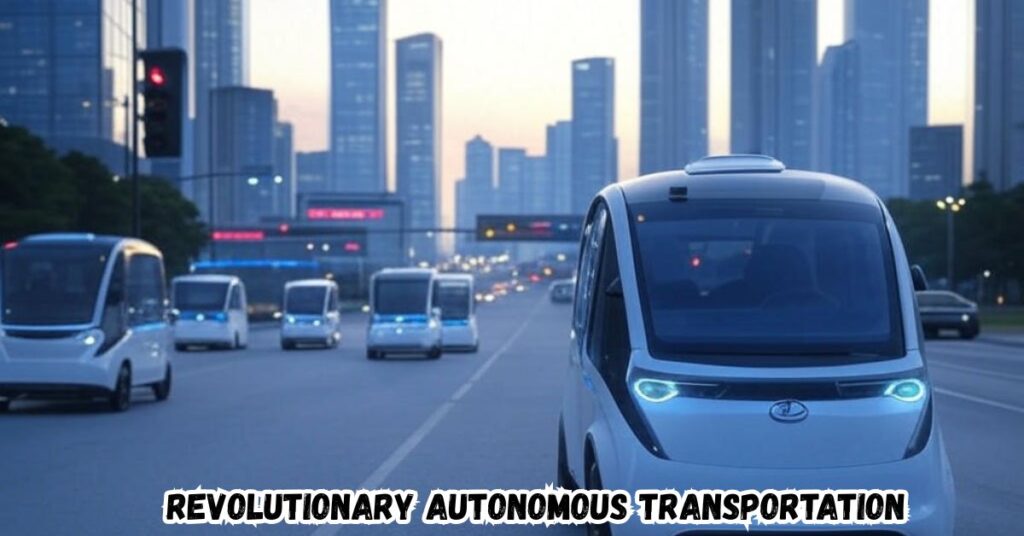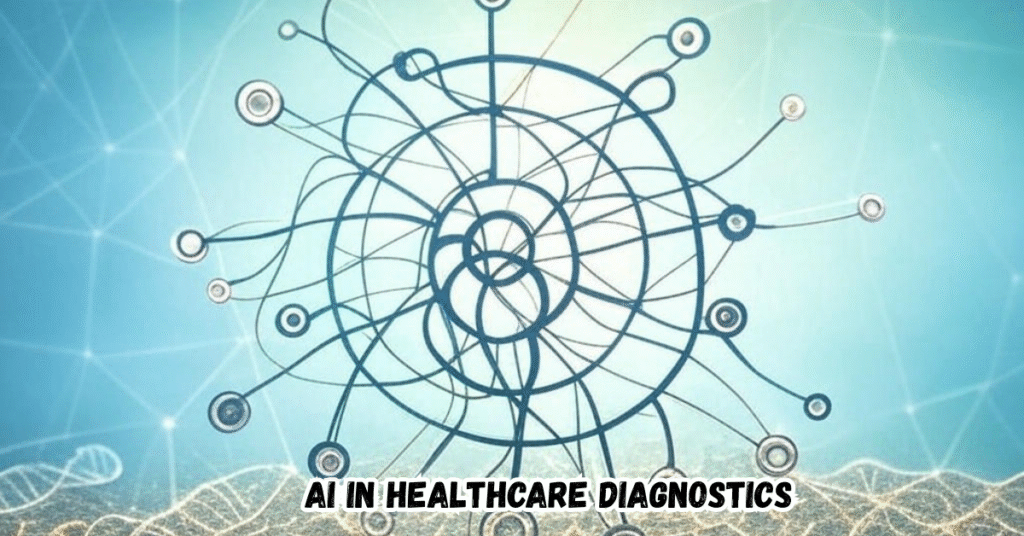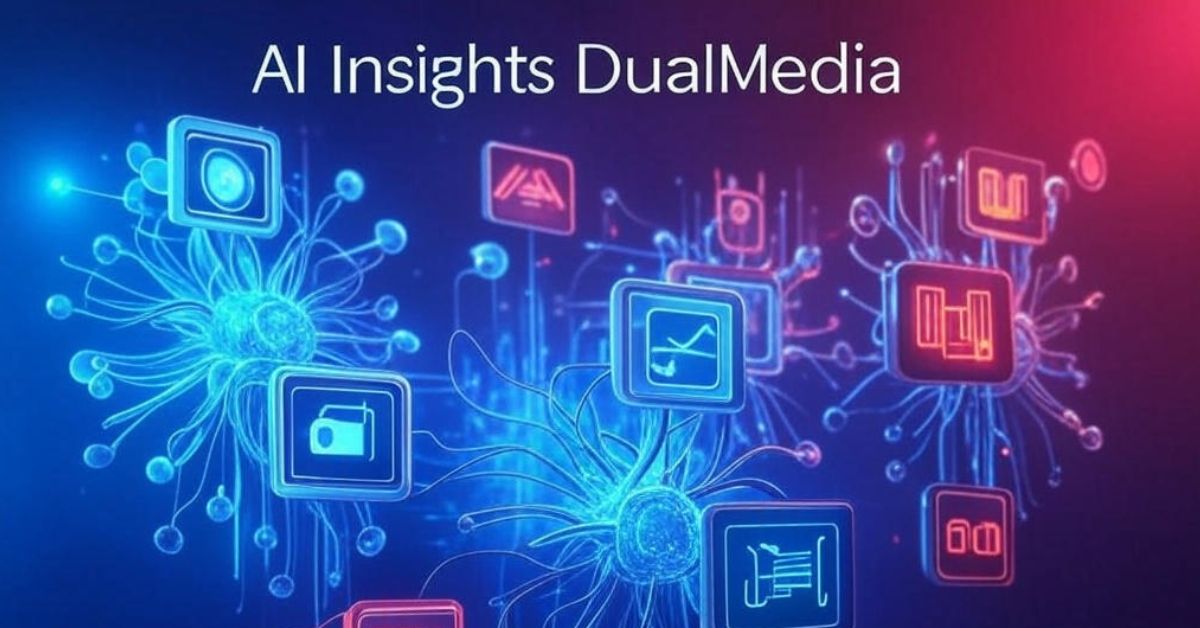At DualMedia, we examine artificial intelligence with clarity and honesty. The landscape of AI technology is evolving at breakneck speeds. Modern AI solutions are reshaping how businesses operate across industries.
Our research team has analyzed countless implementations to identify true innovations. We focus on practical applications rather than theoretical possibilities. These nine game-changing innovations represent the cutting edge of what’s actually working today. Each technology addresses real challenges faced by businesses and individuals alike.
The integration of these systems creates unprecedented opportunities for growth and efficiency. Understanding these innovations gives forward-thinking organizations a competitive advantage. Let’s explore how these technologies are transforming our digital landscape.
AI Insights DualMedia Game-Changing Innovation
The most impactful AI technologies share certain characteristics. They solve genuine problems rather than creating solutions in search of problems. Effective AI systems augment human capabilities instead of simply replacing them.
The best implementations provide measurable returns on investment. Organizations adopting these technologies report significant improvements in productivity. Customer satisfaction scores increase when AI is thoughtfully deployed. The cost savings from automation can be reinvested in creative human work.
Data quality forms the foundation of every successful AI implementation. Companies with clean, well-structured data achieve better results faster. The convergence of multiple AI technologies creates exponential rather than incremental benefits. Let’s examine each innovation in detail to understand its practical applications.
1: Advanced Natural Language Processing
Natural Language Processing has evolved dramatically in recent years. Modern NLP systems understand context with remarkable accuracy. They can follow complex conversations across multiple topics. The technology now recognizes subtle emotional cues in written text.
Grammar checking capabilities have become significantly more nuanced. These systems excel at generating human-like text for various purposes. They can switch between specialized domains like medical and legal terminology. Sentiment analysis helps businesses understand customer feedback at scale.Language comprehension now extends beyond simple keyword matching. Multi-step instructions are followed with high fidelity.
The systems demonstrate context understanding that approaches human levels. Text generation capabilities produce increasingly coherent long-form content. Chain-of-thought prompting allows for more complex reasoning tasks. Few-shot examples help models adapt to specialized domains quickly. Zero-shot response capabilities continue to improve for novel scenarios.
2: Revolutionary Autonomous Transportation
Self-driving technology has progressed from controlled experiments to real-world deployment. Autonomous vehicles now operate in diverse environments and weather conditions. The decision-making capabilities of these systems improve continuously.

Safety records increasingly surpass human drivers in controlled settings. Advanced sensor arrays provide comprehensive environmental awareness. Machine learning algorithms process this sensory data in real-time.Major cities have begun integrating autonomous vehicles into public transportation.
Delivery companies are expanding their autonomous fleets rapidly. The technology reduces accidents caused by human error and fatigue. Insurance companies are developing new models for autonomous vehicle coverage. Regulatory frameworks are evolving to accommodate this technological shift.
3: AI-Powered Financial Risk Management
Financial institutions now leverage AI for unprecedented risk assessment capabilities. These systems process vast amounts of transaction data in real-time. Subtle patterns indicating fraud are detected almost instantly. Credit decisions incorporate hundreds of variables beyond traditional credit scores.
Information retrieval systems pull relevant financial data from multiple sources. Machine learning models continuously adapt to new fraud techniques.Banks report significant reductions in successful fraud attempts. Insurance companies use similar systems to identify claim anomalies.
READ MORE BLOG : New Software Name 8tshare6a: A Revolutionary Step in Secure File Sharing
Investment firms employ AI risk management for portfolio optimization. Small businesses gain access to more accurate risk assessment tools. Consumers benefit from fewer false fraud alerts disrupting legitimate transactions.
4: Next-Generation Robotics
Modern robotics combines physical capabilities with advanced AI systems. Factory robots now work safely alongside human counterparts. Surgical robots assist doctors with unprecedented precision. Warehouse automation has reached new levels of flexibility and efficiency. Agricultural robots perform delicate harvesting tasks previously requiring human hands.
Micro-agents within robotic systems handle specialized sub-tasks autonomously.The impact on manufacturing includes increased production rates and quality. Healthcare applications result in reduced complications and faster recovery. Logistics operations report dramatic improvements in fulfillment speed.
Dangerous jobs become safer through robotic assistance and automation. Companies implementing these systems see rapid returns on their investments.What makes this generation different is adaptability and learning capability. The robots adjust to changing conditions without requiring reprogramming.
5: Cybersecurity AI Solutions
Cybersecurity has transformed from reactive to proactive through AI implementation. Modern systems continuously monitor network behavior for anomalies. Attack vectors are identified before they can be fully exploited. Self-consistency checks help validate security alerts before action.

Threat intelligence is gathered and analyzed from global sources. Orchestration frameworks coordinate defensive measures across systems.Organizations report dramatically reduced dwell time for attackers. Data breaches affect fewer records when AI systems respond automatically. Security teams focus on strategic issues rather than routine monitoring.
The cost of security incidents decreases through faster containment. Customer trust improves with demonstrably better security outcomes.The technology employs behavioral analysis rather than signature matching.
6: Generative AI Tools
Creative work has been revolutionized by generative AI capabilities. Artists and designers use these tools to explore new aesthetic possibilities. Writers employ generative systems for ideation and drafting. Marketing teams create personalized content at unprecedented scale.
Product developers rapidly prototype concepts using generative design. The technology supports text generation across multiple formats and purposes.Business applications include accelerated content creation for websites and social media.
Design teams iterate through concepts faster than previously possible. Technical writers generate documentation from minimal input. Customer communications become more personalized without increased staff. Creative professionals use the technology as collaborative assistants rather than replacements.
7: AI-Enhanced Customer Experience
Customer interactions have been transformed through intelligent automation. Modern systems understand customer intent beyond simple keyword matching. They remember previous interactions for truly conversational experiences.
Emotional cues in customer communications receive appropriate responses. Service is personalized based on history and predicted preferences. Retrieval-Augmented Generation ensures responses contain accurate information.Businesses report higher customer satisfaction scores after implementing these systems.
Resolution times decrease while successful outcomes increase. Customers receive consistent service regardless of channel or time. Support staff handle complex issues while AI manages routine inquiries. The overall cost of customer service decreases while quality improves.
READ MORE BLOG : Dowsstrike2045 Python: The Future of Cybersecurity and Automated Testing
8: AI in Healthcare Diagnostics
Medical diagnosis has reached new levels of accuracy through AI assistance. Imaging systems detect subtle abnormalities human eyes might miss. Pattern recognition identifies rare conditions from complex symptom combinations. Patient records provide context for current symptoms and test results.

Treatment recommendations include evidence-based options with success probabilities. Specialized language processing extracts relevant information from medical literature.Hospitals report earlier disease detection leading to better outcomes. Diagnostic accuracy improves particularly for rare or complex conditions.
Patient waiting times decrease through more efficient assessment. Healthcare costs are reduced through appropriate treatment selection. Medical professionals focus on patient care rather than routine analysis.The systems work by analyzing massive datasets of previous cases. Machine learning models identify correlations invisible to human practitioners.
9: AI Development Platforms
Creating AI applications has become accessible to organizations of all sizes. No-code and low-code platforms democratize AI development. Agentic systems can be assembled without deep technical expertise.
Integration with existing business systems happens through standard connectors. Testing and deployment processes are streamlined for rapid iteration. Prompt engineering tools help optimize system performance.Businesses report dramatic acceleration in AI project completion. Development costs decrease while successful implementations increase.
Organizations build institutional knowledge around practical AI applications. Technical and business teams collaborate more effectively on solution design. Custom solutions address specific business needs rather than generic capabilities.
Frequently Asked Questions
How quickly can businesses implement these AI innovations?
Implementation timelines vary based on organizational readiness and specific technologies. Most companies begin seeing benefits within three to six months of committed implementation efforts.
Do these technologies require specialized technical teams?
Many modern AI platforms are designed for business users with minimal technical background. Organizations typically need some technical expertise for integration and optimization.
What industries benefit most from these innovations?
Every industry has high-impact application areas for AI technologies. Financial services, healthcare, manufacturing, and retail show particularly strong returns.
How do companies measure success with AI implementations?
Effective measurement combines operational metrics like time and cost savings with strategic outcomes. Customer satisfaction, employee productivity, and new revenue opportunities provide comprehensive views.
What are the primary challenges in adopting these technologies?
Data quality and integration represent the most common challenges. Organizational change management and skill development also require attention. Clear governance structures help address ethical and regulatory considerations.
Conclusion
The nine innovations we’ve explored represent transformative capabilities for forward-thinking organizations. Each technology addresses specific business challenges with measurable results. The combination of these innovations creates compounding benefits across operations.
Retrieval-Augmented Generation and agentic systems particularly show promise for future development. The organizations achieving the greatest success approach AI strategically rather than tactically.Implementation should begin with clear business objectives and careful planning.
Data quality forms the foundation for every successful AI initiative. The partnership between human expertise and AI capabilities produces the best outcomes. Regular evaluation against defined metrics ensures continued alignment with business goals.

Bolt is a seasoned SEO expert with a passion for content writing, keyword research, and web development. He combines technical expertise with creative strategies to deliver exceptional digital solutions.
















